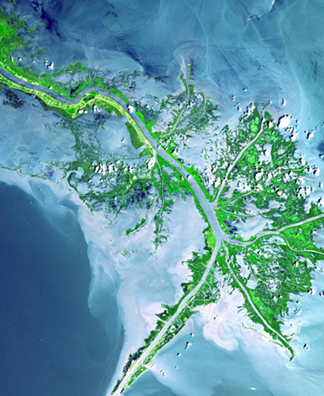
Geotimes Home | AGI Home | Information Services | Geoscience Education | Public Policy | Programs | Publications | Careers

 Policy-makers looking
to curb future increases in atmospheric carbon dioxide, could turn to a simple
plan: Plant trees. The Intergovernmental Panel on Climate Change (IPCC) estimates
that converting unproductive cropland and grasslands to agroforests could sequester
about 400 million tons of carbon dioxide in wood each year by 2010. Together with
other methods for increasing and preserving carbon reservoirs in soils and vegetation,
planting trees could sequester as much as 100 gigatons of carbon dioxide by 2050,
according to the IPCC — offsetting 10 to 20 percent of potential fossil fuel
emissions during that period.
Policy-makers looking
to curb future increases in atmospheric carbon dioxide, could turn to a simple
plan: Plant trees. The Intergovernmental Panel on Climate Change (IPCC) estimates
that converting unproductive cropland and grasslands to agroforests could sequester
about 400 million tons of carbon dioxide in wood each year by 2010. Together with
other methods for increasing and preserving carbon reservoirs in soils and vegetation,
planting trees could sequester as much as 100 gigatons of carbon dioxide by 2050,
according to the IPCC — offsetting 10 to 20 percent of potential fossil fuel
emissions during that period. |
Geotimes Home | AGI Home | Information Services | Geoscience Education | Public Policy | Programs | Publications | Careers |